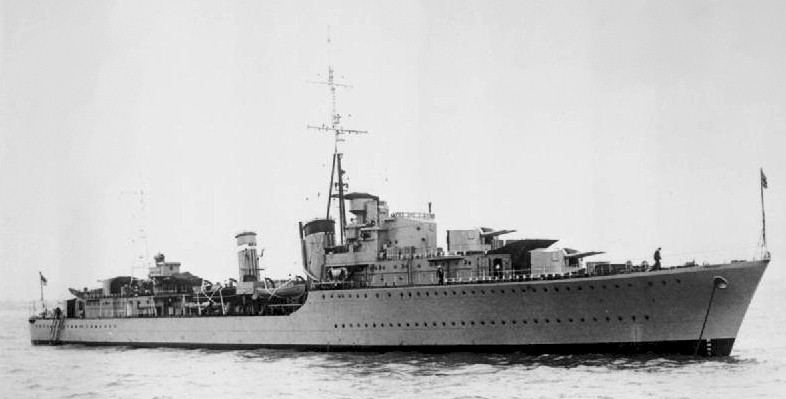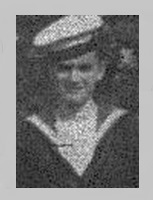|
HMS SOMALI F33
Tribal Class Destroyer
HMS SOMALI F33
This page is not meant to be a comprehensive history of HMS SOMALI, but a record of sailors of the ROYAL CANADIAN NAVY who served in her, photos they took and stories they may have shared with their families.
H.M.S. Somali (F 33) Tribal Class Destroyer, built by Swan Hunter and Wigham Richardson Ltd. (Wallsend-on-Tyne, U.K.): Wallsend. Commissioned Dec. 12, 1938. Lost Sep. 20, 1942, at position 69.11N, 15.32W.
From April 1942 onwards, Somali was assigned to convoy duty on the Murmansk run. By June 1942, H.M.S. Somali, H.M.S. Ashanti, H.M.S. Eskimo and H.M.S. Tartar were the last Home Fleet Tribals left. In September 1942, while escorting convoy QP-14, a pack of U-boats located the convoy. Two merchantmen were sunk, and a short time later, H.M.S. Ashanti sighted a U-boat running on the surface. Ashanti gave chase, at full speed firing her 4.7 inch guns as the U-boat dived. The hunt went on for two hours but the contact was lost. The Tribal was now 20 miles astern of the convoy so she steamed at full speed in order to rejoin the other ships and in doing so, ran low on fuel oil. Ashanti then changed places with Somali on the inner screen to await a favourable opportunity to refuel. At 19:20 hours, Somali took up Ashanti's position and was immediately hit with a torpedo in position 74.40N, 02.00W. The explosion blew the torpedo tubes over the side and cut all of the port side main stringers so that the ship was only held together by the upper deck and starboard side as far as the keel. The port engine fell through the bottom of the ship and the engine and gear rooms filled with water. The leaking bulkheads on either side were promptly shored up and seemed to be holding but there was no light or power except from an unreliable auxiliary diesel generator which powered the bilge pumps. The trawler, H.M.S. Lord Middleton, took most of Somali's crew and transferred them to other ships. Of the 80 men left aboard, all were forbidden to go below except for any critical work. H.M.S. Ashanti then took her crippled sister ship in tow, cruising at a slow 7 knots. The flat, calm sea was ideal for towing and for revealing periscope wakes. The tow wire parted company, but H.M.S. Ashanti managed to rig up a new line and both ships continued to crawl to Akureyri. That evening, Somali's dynamo seized up so hand pumps were used for the bilge. These could not cope with the inflow of water so the Tribal's 17 degree list increased. With the donation of many electrical cables from other ships, an emergency power umbilical was rigged up from H.M.S. Ashanti to another destroyer and the bilge pumps started operating again. Somali's list was reduced to 12 degrees. Power was now available for lighting and cooking as well. By the September 23/24th, Ashanti had towed Somali for 420 miles and the weather was getting worse. Somali's plates were groaning terribly. In the middle of a snow squall, observers on Ashanti's bridge saw a blue flash behind them. The towline and the electric cable had snapped and a piece of the cable was hanging over Ashanti's stern. Quickly, a 20-inch searchlight was brought to bear on the crippled ship. By now, Somali had folded in half like a hinge with bow and stern climbing skywards. For a moment, she hung motionlessly; the deck plating then snapped and her bulkheads collapsed. Her stern capsized and sank quickly and the bow went vertically and steadily. H.M.S. Somali (Lt. Cdr. Colin Douglas Maud, DSC and Bar, R.N.) was gone in position 69º11'N, 15º32'W.
At 19:55 hours on Sep. 20, 1942, U-703 fired a spread of three torpedoes at the H.M.S. Somali (G 33) (Lt. Cdr. C. Maud) and saw one hit after 1 minute 32 seconds. The destroyer had escorted the convoy PQ-18 to Murmansk and was now screening QP-14 on her homebound voyage. H.M.S. Ashanti (G 51) had unsuccessfully hunted a U-boat about 20 miles behind the convoy and rejoined at full speed, but was then low on fuel oil. She thus changed places with H.M.S. Somali (G 33) on the inner screen to await a favourable opportunity to refuel. Shortly after taking position in the outer screen, the H.M.S. Somali (G 33) was hit by one torpedo. The explosion blew the torpedo tubes over the side and cut all of the port side main stringers so that the ship was only held together by the upper deck and starboard side as far as the keel. The port engine fell through the bottom of the ship and the engine and gear rooms filled with water. The leaking bulkheads on either side were promptly shored up and seemed to be holding but there was no light or power except from an unreliable auxiliary diesel generator which powered the bilge pumps.
The British rescue ship Zamalek stood-by within minutes after the hit, but she was sent back to the convoy. The H.M.S. Lord Middleton (FY 219) then took off most of the crew and transferred them to other ships. Only a skeleton crew of 80 men was left aboard and all were forbidden to go below except for any critical work. H.M.S. Ashanti (G 51) then took her crippled sister ship in tow, cruising at a slow 7 knots in a flat and calm sea, that was ideal for towing and for revealing periscope wakes. The tow wire parted company, but they managed to rig up a new line and both ships continued to crawl to Akureyri, Iceland. That evening, the dynamo of H.M.S. Somali (G 33) seized up so hand pumps were used for the bilge. These could not cope with the inflow of water so the 17° list increased. With the donation of many electrical cables from other ships, an emergency power umbilical was rigged up from the towing ship to another destroyer and the bilge pumps started operating again, reducing the list to 12°. Power was also available for lighting and cooking as well.
In the night on September 23/24th, the weather was getting worse north of Iceland in 69°00N/15°30W (a distance of 420 miles) and her plates were groaning terribly. In the middle of a snow squall, observers on the bridge of H.M.S. Ashanti (G 51) saw a blue flash behind them. The towline and the electric cable had snapped and a piece of the cable was hanging over the stern. Quickly, a searchlight was brought to bear on the crippled ship. By now, H.M.S. Somali (G 33) had folded in half like a hinge with bow and stern climbing skywards. For a moment, she hung motionlessly; the deck plating then snapped and her bulkheads collapsed. Her stern capsized and sank quickly and the bow went vertically and steadily, only 35 men of the skeleton crew could be rescued.
L/Sto, RCN MPK - 24 Sep 1942
|


